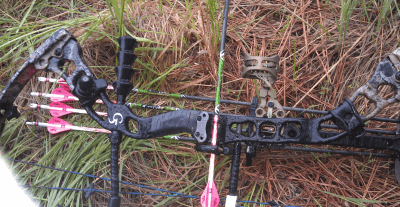- Home
- About
- Blog
- For Parents
-
Corners
- Allison’s Corner
- Amber’s Category
- Andrea’s Corner
- Ashley’s Corner
- Brandi Jo’s Corner
- Brittany’s Corner
- Brooke’s Corner
- Catrina’s Corner
- Conservation
- Desiree’s Corner
- Emily’s Corner
- Erica’s Corner
- Erin’s Corner
- Heather’s Corner
- Ivory’s Corner
- Jeana’s Corner
- Katie’s Corner
- Kelly’s Corner
- Kelsey’s Corner
- Kendra’s Corner
- Liberty’s Corner
- Lisa’s Corner
- Meagan’s Corner
- Melissa’s Corner
- Mimi’s Corner
- Morgan’s Corner
- Nicole’s Corner
- Sarah’s Corner
- Savannah’s Corner
- Shannon’s Blog
- Sharon’s Corner
- Sherri’s Corner
- Tara’s Corner
- Contact
- Guest Post

Getting Started – Weapons
Perhaps one of the most intimidating aspects of getting started in hunting is the weapon. Many
people, especially women and children, are often afraid of guns, particularly if they haven’t had
any exposure to them in the past. While a healthy respect for weapons is important, there is no
reason to be afraid of guns or other weapons. All you need is a familiarity with your weapon of
choice. Here are some tips to get you started.
–
Start now. Hunting season is not the time to learn how to use your weapon of choice. Before
you head into the field to take an animal, you need to be confident in your skill with your
weapon of choice so you can make the best shot and a quick, ethical kill.
–
Take a hunter safety course. Every state has hunter safety education programs, usually
sponsored by the department of fish and wildlife for that state. Most states require hunters to
have taken such a course before being able to purchase a hunting license. These courses are an
excellent way to learn the basics of safe and ethical hunting. You will learn about the
regulations of your state, safe gun handling, survival tips, basic woodsmanship, and game care.
Most programs also have a field day, where participants have the opportunity to handle loaded
guns under the supervision of trained instructors to ensure that you can properly and safely
handle your weapon and demonstrate shooting proficiency before receiving your certificate.
–
Try before you buy. Weapons are a major expense and it is discouraging to spend hard-earned
money on something that you later find you don’t like. If you know people with the weapons you
are considering, talk to them about trying them out. Most people are more than happy to let
you shoot their guns or bows. If you plan to do a lot of gun shooting, it would be nice to bring
along your own ammunition, since this is not cheap and many people may not be happy for you
to shoot up all of theirs. Ask what ammo they use in their guns to make sure you bring the right
caliber. There are also some gun dealers with indoor shooting ranges that will let you try a gun
out before you buy.
–
The same goes with bows. Many bow dealers have shooting ranges and will allow you to test
out some bows. Even the ones that don’t have a range will probably let you draw the bows to let
you see how it feels. Just be sure not to dry fire a bow, as this may damage or destroy it. Worse
than buying something you don’t like is having to pay for something you can’t even use because
you broke it!
–
Practice makes perfect. Now that you have acquired your weapon, regardless of what it is, you
need to practice in order to become comfortable and proficient with it. Start out on a range
with a target that will allow you to sight your weapon in. Take someone with you who knows
how to adjust your sights. Have them show you how they are doing the adjustments and why.
When you are shooting, try to focus on developing good technique. This is best achieved by
having someone with you to watch you form and can give constructive critiques. It is much
easier to correct form problems early than to fix them later, when they are more ingrained.
Practice with your safety until it becomes second nature to set it after every shot. At first you
will have to think through every step of the shooting process, but with time it will become automatic.
–
After practicing on the range, it is fun to go out and practice in the field on a variety of
different targets. This may not be practical with a high powered rifle, but you can work on your
skills with a .22 by shooting at cans, pine cones, and in some places, ground squirrels. With a
bow, you can do something similar. My husband and I love to go stump shooting; we walk
through the woods and find something that might make a worthy target, whether it is a stump,
a pine cone, a tuft of weeds, or a stick and see who can hit it. It makes shooting more
interesting than a regular target and is great for learning to judge distances. There are special
tips (judo points) for arrows that help prevent them from skipping off into the great beyond.
–
There is no such thing as too much practice. Once you feel you are proficient during your
practice sessions and feel confident with your shot placement every time you fire your weapon,
you are ready to head into the field as a hunter.
–
Stay tuned for more in my series of blogs to help you get started in the sport of hunting. Feel
free to send any questions you might have and I will be happy to answer them personally. My
goal is to get you started on the right foot toward a long and exciting life as a hunter.
May 26, 2013 | Category: Blog | Comments: 1

Great advise!